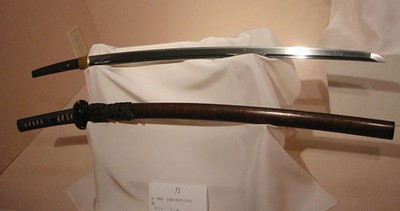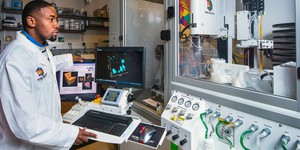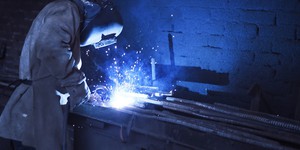Abstract
It's easy to forget that metals are everywhere and in nearly everything. They are a part of our lives in so many ways that we hardly notice them. But just stop and think about it. We use metal spoons to eat and cook our food. Cars, bikes, and planes are composed of metals. Metals are in our furniture and part of your school supplies. Some people even have metal in the dental work in their mouths. Their strength and dependence is obviously very important. But what are metals? In this science fair project, not only will you learn what a metal is, but you'll learn a way to make metals stronger!Summary
Michelle Maranowski, PhD, Science Buddies

Objective
To demonstrate the differences in work hardening for two different metals.
Introduction
Metals are part of our everyday lives. Some metals are strong and light and can be used to build buildings, while others conduct heat and electricity. Metals can even be made very clean so that they can be part of an artificial knee or heart pacemaker.
The Earth's crust is mostly made up of oxygen and silicon (74.4 percent). But aluminum and iron make up 8.1 percent and 5 percent, respectively. The other 12.6 percent is attributable to other elements. It is not known when humans started working with metals, but at some point a few millennia ago, a human figured out that heating certain rocks, called ore, yielded a material that was easy to manipulate and form into all kinds of useful tools and implements—metal. Gold, the most malleable and ductile metal, was prized for its luster and ease to form. It was made into decorations to adorn humans and homes. Early humans used several types of metals for their tools and decorations, including copper, iron, tin, lead, silver, and gold.
But what is a metal? A pure metal is an element that is made up of a single kind of atom. The atoms line up in a regular pattern that repeats itself many times, which is called a crystal structure. The atoms in the crystal structure are joined together by metallic bonding. Metallic bonding is what allows metals to be excellent temperature and electrical conductors and to have high malleability and ductility. If you draw a diagonal line between boron and polonium on the periodic table of the elements, to the lower left of this line are metals.
There are many ways to describe the properties of metals. For example, metal hardness describes the ability of a metal to resist being permanently deformed, and metal toughness describes the ability of a metal to absorb a sudden shock. Hammers are a good example of how a simple tool is actually not so simple. Hammers have to be both hard and tough in order to work well. The part of the hammer that hits the nail has to be hard, but behind the hitting surface, the hammer has to be tough. If it isn't tough, the hammer could break and injure the user. The metal in the hammer has to be worked just right to make sure that it is functional. The ancient Japanese Samurai sword smiths took advantage of both hard steel and tough steel to make one of the world's deadliest fighting weapons. The outer shell of the sword is hard steel. The edge of the hard steel can be made extremely sharp; however, it is brittle, so you wouldn't want to make an entire sword out of this kind of metal because it could break during a fight. The core of the sword is made from tough steel, which can absorb shock without breaking. So when a Samurai slashed with his sword, the outer steel made the cut, while the core handled the shock of the cutting. Samurai swords were so sharp and strong that they were graded by the number of human bodies they could cut at once!
 Image Credit: Wikipedia / GNU Free Documentation license
Image Credit: Wikipedia / GNU Free Documentation license
Figure 1. This is an example of a katana, a Samurai's sword. (Wikipedia, 2008.)
Metals can actually be combined to make stronger metals. This is called alloying. Bronze is an alloy of copper and tin, while brass is an alloy of copper and zinc, and stainless steel is an alloy of carbon, iron, and chromium. An alloy usually improves upon its starting material in some way.
Besides combining them, another method for making metals stronger is to create dislocations within the metal. A dislocation is a defect or fault in the crystal structure of the metal. Deforming or bending the metals can cause these dislocations. A certain number of dislocations in the metal can make moving metal atoms around the crystal structure easier, making the metal stronger. However, when the number of dislocations gets too high and the dislocations are too close to each other, there is a gradual increase in the resistance of the metal to motion. This is called work hardening. Beyond a certain point, the metal loses ductility and can break. It's the job of sword smiths or blacksmiths to know when metal reaches its peak and if it is still workable.
In this science fair project, you will be investigating work hardening for two different metals: copper and aluminum. Is there a difference in the time it takes to work-harden these metals?
Terms and Concepts
- Element
- Ore
- Malleability
- Ductility
- Atom
- Crystal
- Metallic bond
- Conductor
- Hardness
- Toughness
- Brittle
- Alloy
- Dislocation
- Work hardening
- Annealing
Questions
- What are examples of metals and non-metals? What is their position in the periodic table?
- What are some terms that are used to describe the properties of metals?
- For what purpose would you need to harden metal?
- What is a dislocation? What does a dislocation do in a metal?
Bibliography
The following website discusses metals and their importance in making a Samurai's sword. It also has a quick demo on metals.
- Hamilton, D. (2007, August). Secrets of the Samurai Sword. Retrieved July 20, 2008.
This website is a good reference about metals:
- Engineer's Edge. (n.d.). Strength/Mechanics of Material Basics, General Equations and Definitions. Retrieved July 20, 2008.
If you would like to learn how blacksmiths made hammers, check this publication out:
- Holmstrom, J. (1901). How to Make a Hammer. (Page 41). Retrieved October 31, 2023.
Materials and Equipment
- Thin copper sheet, approximately 4x4 inches. Available online or at a hardware store.
- Thin aluminum sheet, approximately 4x4 inches. Available online or at a hardware store.
- Metal snips for cutting the sample sheets; available at hardware stores
- Permanent marker
- Hammer
- Clean surface that can withstand hammering
- Lab notebook
Disclaimer: Science Buddies participates in affiliate programs with Home Science Tools, Amazon.com, Carolina Biological, and Jameco Electronics. Proceeds from the affiliate programs help support Science Buddies, a 501(c)(3) public charity, and keep our resources free for everyone. Our top priority is student learning. If you have any comments (positive or negative) related to purchases you've made for science projects from recommendations on our site, please let us know. Write to us at scibuddy@sciencebuddies.org.
Experimental Procedure
- Using the metal snips, cut the thinnest copper and aluminum sheets into four strips each, of equal size. You should have four strips of copper and four strips of aluminum when you are finished cutting. Using your permanent marker, label each strip with a number so that you can keep track of each strip. The packing slip that comes with the sample packs has the thickness of each sample. Record the number you assigned each strip and its thickness in your lab notebook. Caution: Exercise caution when handling the strips of metal. They are sharp and can cause painful cuts.
- Make data tables in your lab notebook, similar to the ones shown below. Use the tables to record your data.
- Take two of your copper strips. You will experiment with one strip and use the other strip as a comparison (or control). Mark the control with a "C," in addition to the number it already has on it.
- Place one strip on the table. Using the hammer, hit the middle of the strip two times. Pick up the strip and gently push on the side that was not hammered. Is the strip stiff compared to the control strip? Put the same strip down and hit the strip two more times with the hammer, in the same location as before. Pick up the strip and test whether the copper strip has stiffened even more. Compare it to the control strip. Note your data in your lab notebook. Repeat this step until the copper strip starts to stiffen. How many hammer blows did it take? What is the appearance of the work hardened copper? Is it shiny or dull?
- Repeat step 3 and 4 with your other two copper strips. Always keep the control strip to the side so that you can make a comparison between the worked metal and the control.
- Repeat steps 3-5 with your aluminum strips. Record your data in your lab notebook. Is there a difference in when the aluminum strip started to harden compared to the copper strip?
- Plot your data on a scatter plot. Label the x-axis Metals and label the y-axis The Least Number of Hits to Stiffen. To learn more about scatter plots, or to do your plots online, try the following website: Create a Graph.
| Copper Strip 1 | Aluminum Strip 1 | ||||
| Hits | Did it stiffen? | Observations | Hits | Did it stiffen? | Observations |
| 2 | 2 | ||||
| 4 | 4 | ||||
| 6 | 6 | ||||
| 8 | 8 | ||||
| 10 | 10 | ||||
Ask an Expert
Global Connections
The United Nations Sustainable Development Goals (UNSDGs) are a blueprint to achieve a better and more sustainable future for all.
Variations
- Does the thickness of the material affect when it work hardens? Try repeating the experiment with different thicknesses of the copper and aluminum sheets.
- Try bending and flexing a copper pipe. When does it get too difficult to bend? You can also use a blowtorch to reduce the number of dislocations in the pipe. This is called annealing. Let the pipe cool and see how annealing affects bending the pipe. Adult supervision and proper safety gear are recommended for this variation.
Careers
If you like this project, you might enjoy exploring these related careers:









